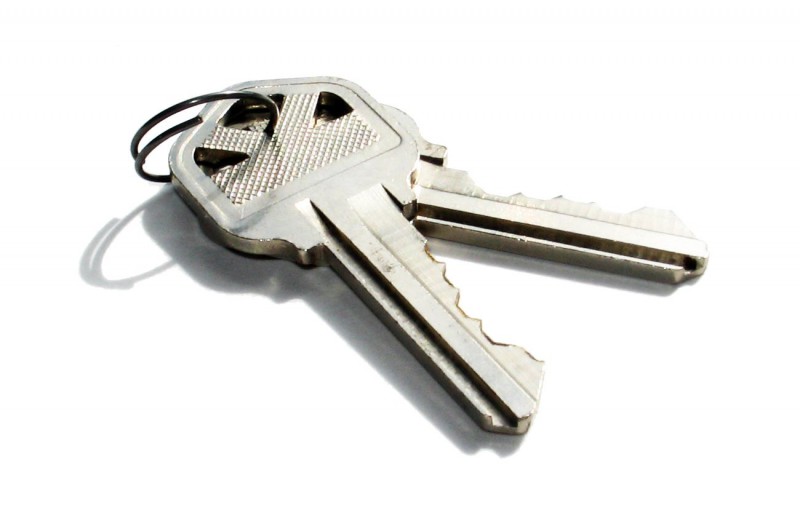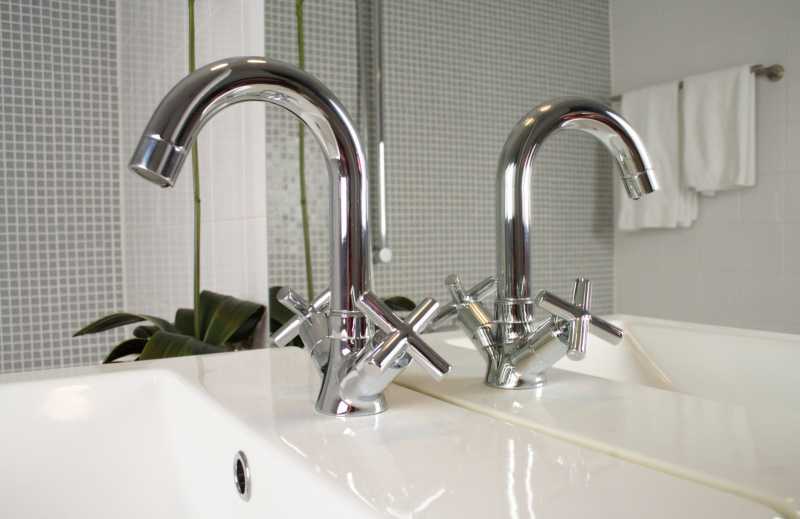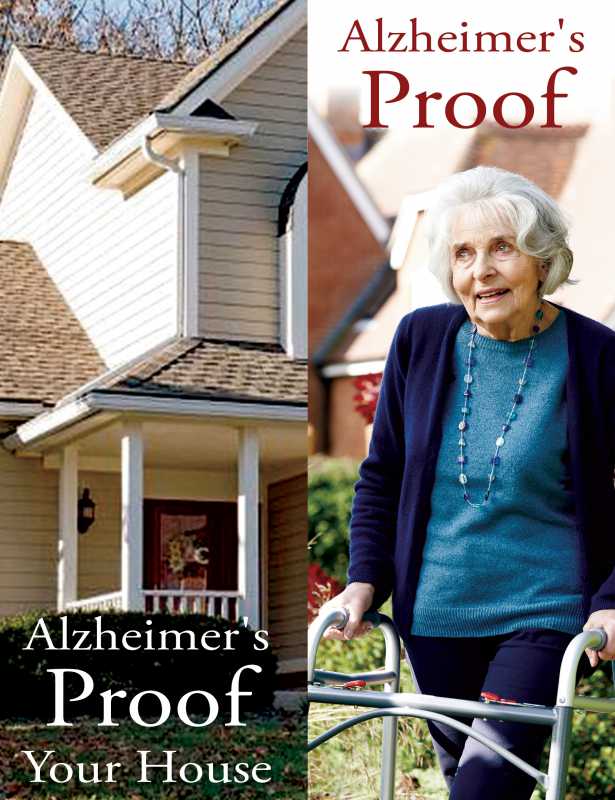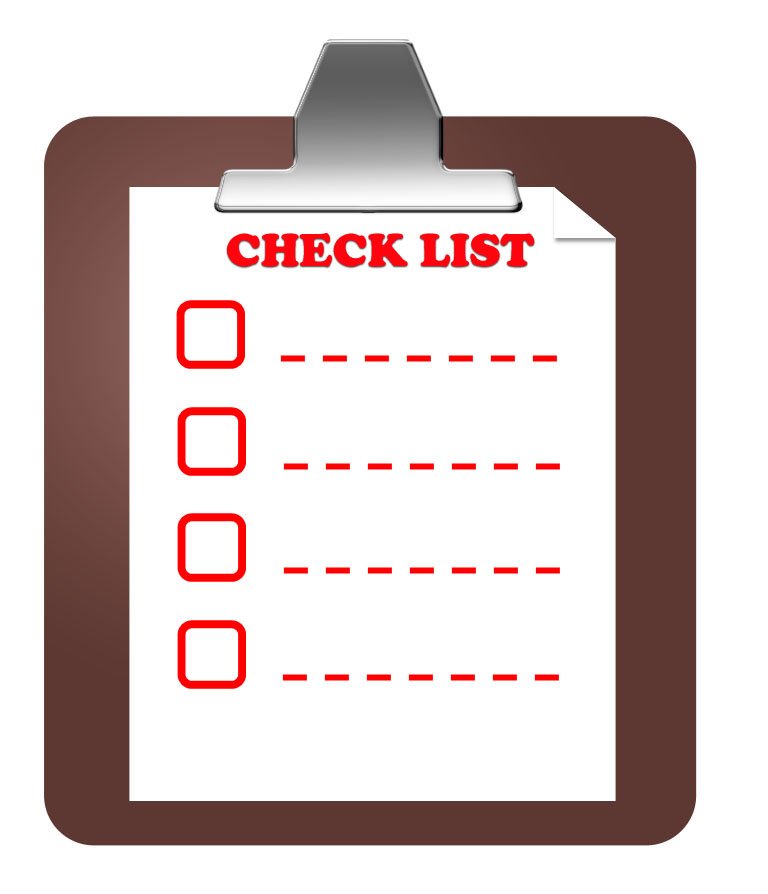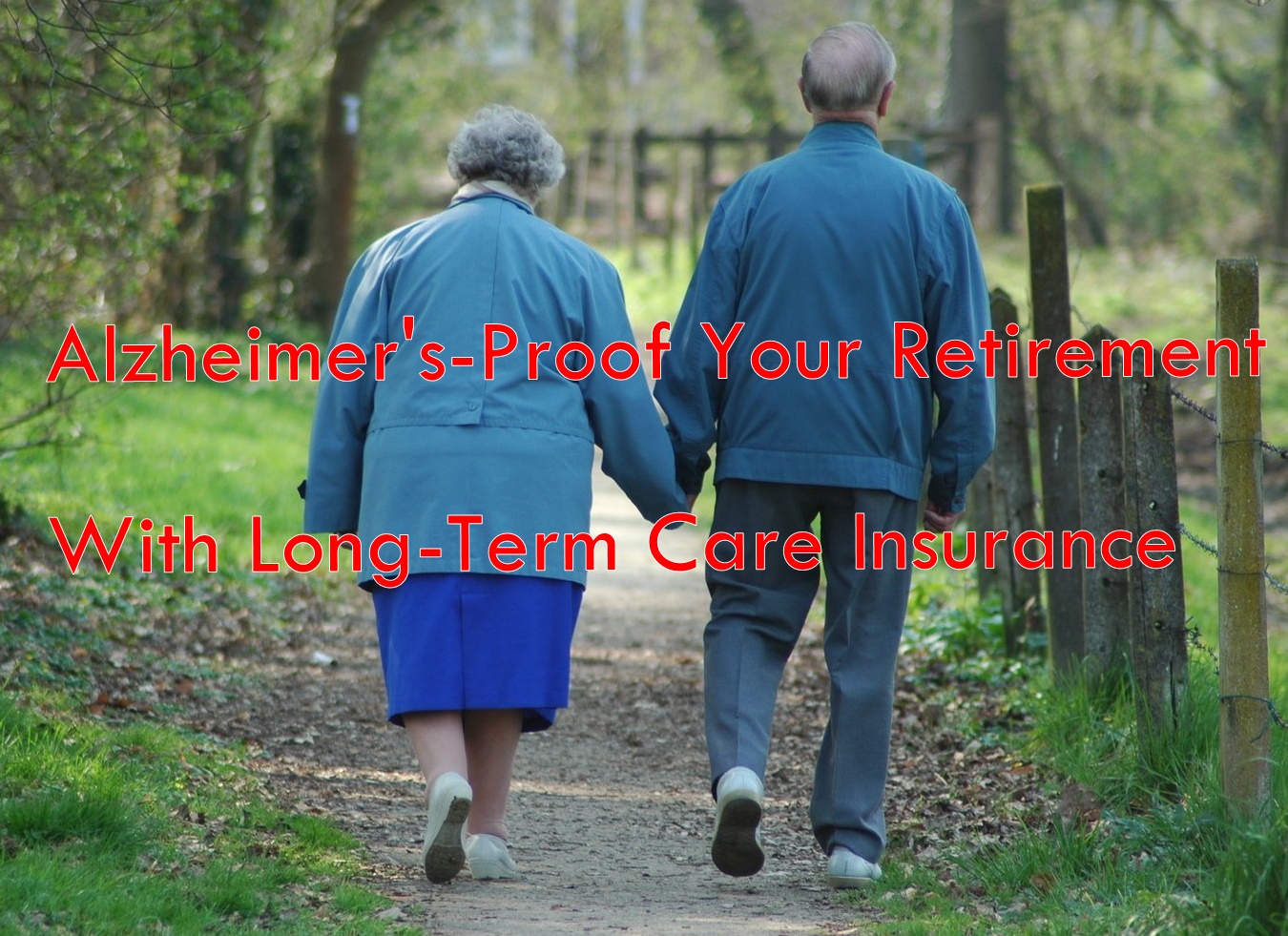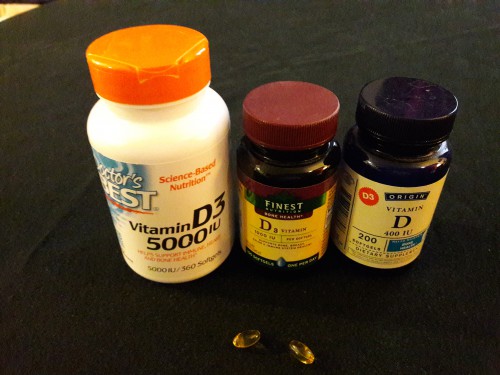How to Alzheimer’s-Proof Your House
Part Five: Indoors and Outdoors
Five-Part Complete Guide to Alzheimer’s Proofing Your House
Part 1 | Part 2 | Part 3 | Part 4 | Part 5
Alzheimer’sProofing Indoors
Attics / Basements / Garages / Sheds / Storage Lockers
Attics, basements, garages, sheds, storage lockers are especially dangerous because, in general, they are repositories for chemicals, machinery, tools, and other items that often require special safe-handling protocols. If you permit your Alzheimer’s-afflicted loved one to enter these areas, it should be only under your careful supervision. Moreover, all of AlzheimersProof’s general safety tips are applicable. To be specific, you need to ensure that walking paths are clutter-free, the accessible areas are appropriately lit, and that dangerous items are beyond your loved one’s reach.
Attic fans. See Fans.
Bicycles. Bicycles should be secured – preferably out of sight. A stationary bike might be a good way for the Alzheimer’s-afflicted individual to exercise, but it must be used only under careful supervision. Regular bicycles are likely to prompt your loved one to leave the premises.
Fans. Fans should be secured. As mentioned for other items, I favor electrical-plug locks that prevent appliances from being plugged into outlets. However, if the fan is functional (or hardwired – as are attic, or whole-house, fans) then access to it must be restricted. At the least, the fan blades need to be inaccessible so that they cannot be touched or bumped into (whether accidentally or on purpose).
House fans. See Fans.
Lawnmowers. Lawnmowers and other lawncare equipment – such as edgers (“weed eaters”), hoes, pickaxes, post-hole diggers, rakes, shears, shovels, spades, etc. – should be placed out of reach. Additionally, mowers (and other machines with engines) should be properly stored. This might involve having to drain them of fuel (e.g., gasoline) and oil. When in doubt, call in a lawn-and-garden specialist or handyman.
Locks, garage. The garage needs to be locked. Actually, it should be secured in several ways. Firstly, if there is an access door from the house, this should be locked with a double-keyed deadbolt. Secondly, I recommend installing a Guardian latch high up on the door for additional security. Thirdly, the motorized garage door should be restricted. You may need to confiscate and control access to remote controls. Additionally, it may be necessary to recode or replace them if confiscation is not an option. Consider purchasing a “dummy” opener to give to your loved one, so that your loved one will not continue to look for the operational remote.
Paints. Enamels, latexes, and oil-based liquid paints should either be properly discarded or else locked securely in cabinets. The same goes for aerosol spray paints except, in this case, there is an additional and more pronounced danger of fire or explosion. Paints must be stored according to manufacturers’ warnings about temperature and pressure.
Sporting equipment. Keep sporting goods locked away. Baseballs and bats, gold clubs, and the like should be put away. In the first place, these items could be used – whether innocently or not – to cause damage indoors. In the second place, they can give rise to desires to “elope.” For instance, my dad would look at his golf clubs and then try to leave the house to get to a golf course. It’s good to give Alzheimer’s sufferers physical activities to do. However, these need to be carefully arranged and scheduled and should not involve pieces of equipment that might put the patient or others at risk.
Tools, garage. Restrict access to electrical tools and hand tools. Locking tool boxes and storage chests are available from hardware and home-improvement stores.
Weight equipment. This equipment needs to be gotten rid of or else kept well out of reach. Like other Sporting equipment, barbells, dumbbells, free weights, and other weight equipment can be dangerous for a person with dementia. Number one, safe-lifting practices may be neglected. Number two, the individual may no longer have any clear idea of his or her own strengths (or weaknesses).
Whole-house fans. See Fans.
RETURN TO PART ONE: THE MASTER LIST.
Bathrooms
SEE PART FOUR: KITCHENS AND BATHROOMS
RETURN TO PART ONE: THE MASTER LIST.
Bedrooms
Assist bars. Remember that one of the “Activities of Daily Living” is being able to transfer (e.g., in and out of bed) by oneself. If this is getting to be difficult, you can place “assist” bars or rails next to the bed. These devices provide the afflicted person with something to grab onto for greater leverage.
Baby monitors. This is highly effective for keeping track of a napping or sleeping dementia patient. It can also be used in other rooms of the house, and for other occasions.
Bed monitors. This pressure-sensitive device can be placed under the mattress. It will alert you whenever a person’s bodyweight is removed.
Bed rails. If your loved one frequently falls out of bed, install bed rails along the sides. Mats or pillows can also be placed on the floor. However, if left in place, these can create a tripping hazard.
Fans. Some people like fans to sleep. However, as electrical appliance, a fan is not without danger. For one thing, you need to make sure the cover is secure so that fingers and objects cannot come into contact with the blades. For another thing, you want to see that the fan is placed somewhere well clear or any water (especially if your loved one likes to sleep with a glass of water on the night table).
Furniture. Ensure that furniture is “anchored” so that it cannot be knocked or tipped over easily. Heavy furniture can cause severe injury or death if it falls on a person.
Lighting, bedroom. Install a low-light detecting nightlight.
Medicines. See Specific Tips for middle-stage Alzheimer’s: Pharmaceuticals.
Prescriptions. See Specific Tips for middle-stage Alzheimer’s: Pharmaceuticals.
Rugs, bedroom. As previously discussed, and just like in other applications, rugs should be removed from the bedroom floor, or tacked down. Properly installed carpeting is superior, since it is less likely to bunch up, slide, or otherwise contribute to a person tripping.
Space heaters. These are dangerous since they must be placed correctly, operated carefully, and switched off while not being monitored. A space heater constitutes a burn and fire hazard. Similar warnings extend to things like electric blankets and heating pads. Central heating and cooling – properly controlled – is a better option.
RETURN TO PART ONE: THE MASTER LIST.
Entrances & Miscellaneous
Chair lifts. Install as needed, if affordable. Also called “stair lifts,” these are basically chairs that run on motorized rails and can transport physically impaired individuals up and down staircases without their having to walk.
Mats. Nonslip mats can be placed in on hardwood or linoleum entry areas in order to minimize the danger of slipping. However, as with rugs, mats can slide. Ensure that mats are stable (e.g., glued, tacked, or otherwise secured affixed to the floor) before relying upon them.
Stair lifts. See Chair lifts.
RETURN TO PART ONE: THE MASTER LIST.
Kitchens
SEE PART FOUR: KITCHENS AND BATHROOMS
RETURN TO PART ONE: THE MASTER LIST.
Laundry Rooms
Bleach. Exposure to bleach (sodium hypochlorite) mainly causes irritation. This can occur in the eyes or skin through topical contact, in the eyes or lungs from inhalation of bleach fumes, or in the mouth or digestive system from ingestion. Keep bleach locked in a cabinet or otherwise secured.
Detergents. See Laundry Room: Laundry detergents.
Laundry detergents. As you did with Bleach, keep all detergents under lock and key. In June of 2017, in an article titled “Laundry Pods Can Be Fatal for Adults With Dementia,” NBC News reported that, “…according to the Consumer Product Safety Commission …six adults with cognitive impairment died over the past five years as a result of ingesting the pods.”[1]
Locks. Because of the many hazards, the laundry-room door should be kept locked. Note: If a forced-air furnace is located in the laundry area, then the door needs to be outfitted with a vent, to allow for the free movement of air into the room.
Clothes Dryers. See Laundry: Dryer, clothes.
Dryers, clothes. Secure the door with childproof latches. Place childproof knob covers over the controls.
Washing machines. Securely latch the door or lid with childproof locks. Use childproof knob covers to restrict access to the control dials.
RETURN TO PART ONE: THE MASTER LIST.
Living Rooms
Bookshelves. Be sure that shelving is anchored to the wall so that it cannot easily topple over if it is bumped, climbed on, pulled, or otherwise mishandled.
Decals. To prevent facial and other injuries, mark glass panes on doors and windows with decals or stickers.
Electrical cords. Ensure that electrical cords are not damaged or frayed and be sure that the plugs are securely plugged into outlets to prevent sparking. See also General Safety Items: Extension cords and Seniors: Trip Hazards.
Fireplaces. For obvious safety reasons, it’s probably best to close up and secure the fireplace. At the least, however, an Alzheimer’s-afflicted person should never be left unattended with fires, fire pokers, lighters, matches, or the like of those.
Rugs. Remove scatter rugs or throw rugs. Repair or replace torn carpet. See also General Safety Items: Tripping hazards and Bedroom: Rugs.
Shelving. See Bookshelves.
Televisions. Be sure that flat screens, tube television sets, etc. are firmly secured and are incapable of being pulled or knocked over. Falling TVs can cause severe injury or death. See also Bedroom: Furniture.
RETURN TO PART ONE: THE MASTER LIST.
Alzheimer’s-Proofing Outdoors
BBQ equipment. Barbecue grills (whether charcoal or gas), fire pits, smokers, and other backyard accessories pose obvious fire risks in the best of times. If one factors in cognitive impairments, things could go from bad to worse in a hurry. Be sure that briquets, fire starters, matches, and the like are under lock and key. Additionally, ensure that gas cans are inaccessible. My dad once tried to scour a floor using sugar granules because I had restricted the chemical cleansers. It’s not outside the realm of the imaginable that an Alzheimer’s-afflicted person might try to start a fire using liquid hydrocarbons like gasoline, kerosene, and so forth.
Fencing. It is important to have definite boundaries around the perimeter of the patient’s “safe space.” An outdoor area can be calming and therapeutic, but it must also be bounded so as not to invite “elopement” (i.e., your loved one’s disappearing from or leaving your home or care area).
Hot tubs. See Pools.
Lighting, exterior. Make sure outside lighting is adequate. Motion sensors can switch on lights when a something moves through their fields. Mercury-vapor or sodium lamps are capable of lighting larger areas. Be sure to avoid irritating neighbors with badly placed fixtures. Keep the steps sufficiently lit to avoid falling at night. Additionally, you might want to light the perimeter of the driveway or walkway, to help guide reentry into the house.
Locks, outdoors. As has been stated elsewhere, entry/exit points need to be carefully controlled. Backyards can lead to “elopement” (or unauthorized departure from the care area), especially if they are unfenced. See Fencing.
Pools. Remove hot tubs, home spas, and swimming pools – or at least restrict access to them using sturdy covers and locking gates. As always, there is no replacement for careful supervision.
Ramps. At some point, it may be necessary to replace traditional steps with a wheelchair-accessible ramp. This should be professionally done. Plywood haphazardly placed on top on two-by-fours might collapse under the weight of a wheelchair, or otherwise pose the risk of serious injury to anyone who ventures on top of it.
Signage. Displaying some sort of alarm system or security signage can deter would-be thieves who may try to prey on the elderly or infirm. To further reduce the danger of the senior being “scammed,” hang a “No Soliciting” sign in a visible place at the main entry.
Spas. See Pools.
Steps. Maintain staircases and steps to prevent concrete deterioration or anything that might cause the surfaces to become falling or tripping hazards. In inclement weather, be sure that surfaces are properly treated with de-icer or salt compounds to prevent slipping and injury
Walking surfaces. Get rid of any items that might present falling or tripping hazards. Eliminate uneven surfaces or walkways, hoses, and other objects that may cause a person to trip. This may mean having to repair cracked or “heaving” concrete.
RETURN TO PART ONE: THE MASTER LIST.
How to Pay for Care Home Modifications
I have discussed long-term care in a separate post. Titled “Alzheimer’s-Proof Your Retirement Savings With Long-Term Care Insurance,” the article chronicles my own family’s financial struggle to get my dad nursing-home assistance. In that article, I point out that there are really only three ways to pay for long-term care.
Three (3) Ways That Anyone Can Pay for Long-Term Care
- Private pay
- Out of your own assets
- Out of your own income
- Spend your assets down and qualify for Medicaid
- File a claim with your long-term care insurance
Now, of course, in order to be able to file a claim with long-term care insurance, you have to actually have a long-term care insurance policy in force. Since you will never be approved for such a policy if you wait until you have Alzheimer’s Disease (or some other form of dementia), if you are interested in protecting your retirement (and other assets) for your family/spouse, then you need to apply for long-term care insurance before you have any signs of cognitive impairment.
When it comes to paying for home modifications, the options dwindle down to two. As the website Caring.com explains: “Like Medicare, Medicaid doesn’t cover physical modifications to the home.”[2]
Two (2) Ways That Anyone Can Pay for Home Modifications[3]
- Private pay
- Long-term care insurance
Most people will therefore have to pay for their own home modifications, regardless of who they have perform the work. However, for those who have the right sort of long-term care insurance, some money might be available to subsidize various house alterations.
You have to check your contract or contact your insurance agent to discover whether these benefits are available to you and what limitations or restrictions, if any, may be placed upon them. For instance, some contracts might limit you to obtaining modifications of certain types, or from certain contractors, etc. And there may be maximums to the dollar amounts that insurance companies are willing to pay for such work.
Generally speaking, you may need to seek preapproval for any prospective, home-modification project.
But, here are a few sorts of installations/modifications that you might expect to receive approval – for those policies that offer these types of benefits.
- Addition of “knee holes” (to accommodate wheelchairs) in bathrooms, kitchens, studies, and work areas
- Installation of chair/stair “lifts” to enable people to traverse house levels without having to walk up stairs
- Mounting of grab bars and handrails
- Placement of wheelchair ramps over entryway steps
- Replacement of conventional bathtubs/showers with walk-in varieties
- Widening of doorways for wheelchair access
For More Information
See the following articles.
“How Do You Alzheimer’s Proof a Car?”
What do we mean by “Alzheimer’s Proofing?” see HERE.
What’s the Difference between Alzheimer’s Proofing and Baby Proofing or Childproofing? See HERE.
RETURN TO PART ONE: THE MASTER LIST.
Notes:
[1] Ben Popken, “Laundry Pods Can Be Fatal for Adults With Dementia,” NBC News, Jun. 16, 2017, <https://www.nbcnews.com/business/consumer/laundry-pods-can-be-fatal-adults-dementia-n773366>.
[2] Joseph Matthews, “FAQ: What Kinds of Home Equipment and Modifications Are Covered by Medicare, Medicaid, or the VA?” Caring.com, Apr. 9, 2018, <>. The author adds, however: “However, some state Medicaid programs have special pilot programs that can help with home modifications. If you need home modification, check with the Medicaid worker who handles your file and ask if there might be special coverage that can help you,” ibid.
[3] Veterans have certain grants that they can apply for through the U.S. Department of Veterans Affairs (also known as the Veterans Administration), usually designated the “V.A.” See Matthews, loc. cit.

